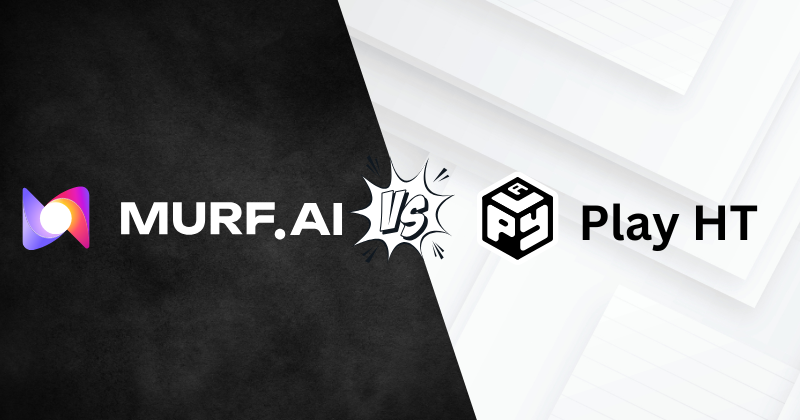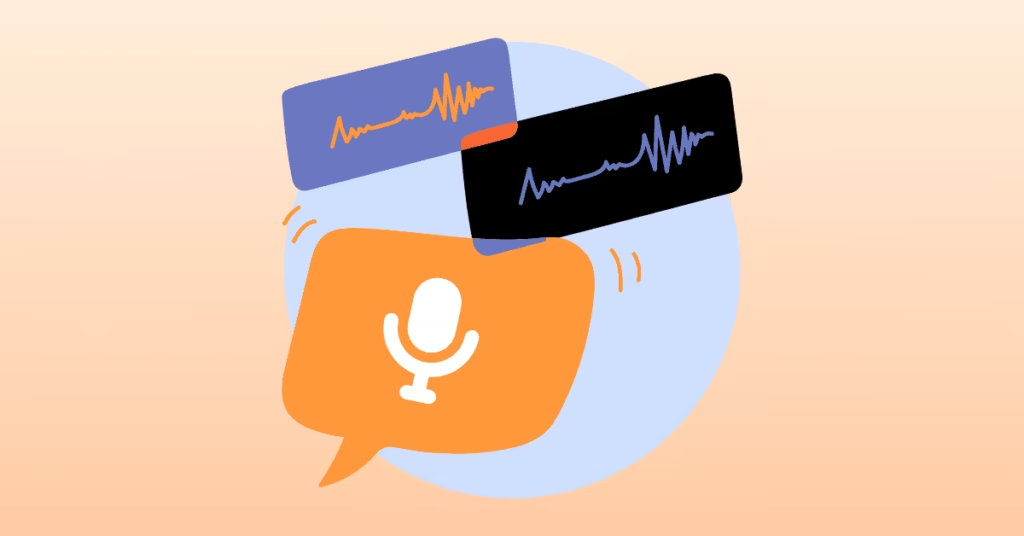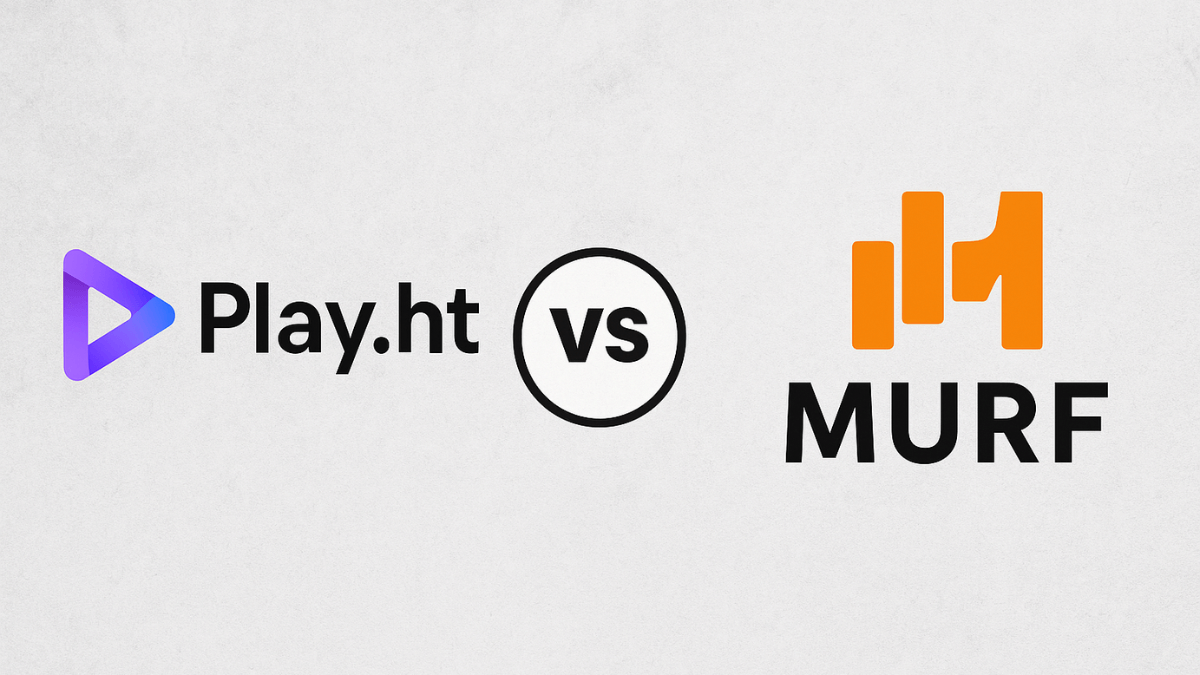When it comes to choosing the best AI voice generator, the debate of play.ht vs murf often comes up among content creators and voiceover professionals. It can be extremely challenging to find the right AI voice generator, so it’s important to be honest about this.
Driven by pure desperation, I looked to artificial intelligence when my customer turned down the third “professional” voiceover I’d paid good money for (it seems my concept of “energetic but trustworthy” differed greatly from voice performers).
Practically living inside Play.ht and Murf over the last eight months, I’ve used both tools for everything from corporate training materials to YouTube videos. My podcast audience has no idea that our “guest host,” Jason, is totally artificial intelligence, and my bank account is grateful every day.
If you’re struggling to choose between these two well-known AI voice systems, I’m about to save you weeks of trial and error. Based on real production experience with both tools, here is my entirely unfiltered comparison.
Read Also! Add AI Voice to Videos in 5 Easy Steps—Ultimate Guide
Play.ht vs Murf. The Brief Version (For Those Pressed For Time)

Should you require the TL;DR version:
Select Play.ht if:
- You want extremely lifelike voices that really sound human.
- You often use many languages
- You desire the most natural emotional expression.
- You are ready to handle sporadic platform problems.
Select Murf if:
- You require rock-solid dependability
- You give a seamless workflow and simplicity of usage top priority
- You produce a great deal of video material
- You desire choices for background music integrated into the background.
For those who desire the complete narrative now…
Play.ht vs Murf Voice Quality
Honestly, this is what matters most. A computerized voice renders everything else irrelevant.
Play.ht Voice Quality
Play.ht now provides access to more than 900 voices in 142 languages. But I was more impressed by the quality than the number. Their premium voices, particularly those marked “Ultra Real,” are nearly undetectable from human recordings.
I frequently use “Thomas” in my technical courses, and viewers have expressed a strong desire for his social media usernames. Such is the power of these voices.
Play.ht excels in the emotional spectrum. Their voices can express deeper emotions such as skepticism, soft encouragement, or slight irritation, not just the simple happy/sad/angry choices most artificial intelligence systems provide.
Murf’s Voice Quality
Murf offers roughly 120+ voices across 20+ languages. Although Murf offers fewer voices than Play.ht, I have observed that the voice consistency is superior.
Though they are quite consistent, Murf’s voices may be a touch less “ultra-realistic” than Play.ht’s top choices. I’ve never had a Murf voice abruptly change character mid-paragraph or mispronounce a word differently across projects—problems I’ve sometimes encountered with Play.ht.
Though Play.ht’s somewhat more genuine sound is good, for commercial projects where consistency is more important than final realism, I usually prefer Murf.
User Experience & Process
A poor interface can squander hours of your time, which is precious. Different platforms perform differently when it comes to task completion.
Read Also! Top AI Voice Tools for Audiobooks in 2025 – Fast & Simple Guide
Play.ht Dashboard
To be honest, the UI of Play.ht is not exactly award-winning. Though sometimes annoying, it is useful. At times, the workflow seems disjointed, with tools spread among several dashboard areas.
Project organization might be improved; I have spent time looking for prior generations more than once. That said, once you understand the system’s idiosyncrasies, you can circumvent them.
Still, the voice choice tool merits particular acclaim. Finding the ideal voice is far simpler on most platforms when one can filter by accent, age, style, and emotion.
Murf’s interface
Murf’s interface exemplifies deliberate design. With a learning curve so mild it practically doesn’t exist, everything is precisely where you’d expect it to be.
The project structure makes sense and allows for simple sorting and searching. The editor, which meant I was productive from day one, operates like known software—think Google Docs meets audio editing.
The highlight is the timeline editor, allowing simultaneous audio and text manipulation. This synchronization feature helps me to save hours of weekly editing time for video producers.
Read Also! Play.ht Review 2025: Is This the Best AI Voice Tool for Creators?
Beyond Basic Text-to-Speech, Special Features

Though in distinct ways, both systems exceed basic text-to-speech.
Play.ht Unique Qualities
Their voice-copying technology is wonderful. For personal projects, I made a copy of my voice; my wife could not reliably identify which recordings were mine and which were artificial intelligence.
- The developer API is strong and well-documented, so integrating it into other tools and processes would be really simple.
- For individuals who speak the language of Speech Synthesis Markup Language, Play.ht provides great control.
- Multilingual Excellence: It not only supports several languages, but also the accents genuinely seem natural instead of like an American speaking Spanish slowly.
Murf’s Standout Qualities
Built-in screen recording: I can make voiceovers while recording my screen, all in one tool, which was a game-changer for my training videos.
- Murf’s capacity to match voice with video timing is rather strong and exact.
- Licensed background tracks reduce one more tool in my production chain.
- Unlike most “collaborative” tools that merely generate additional email alerts, the team actually uses collaborative tools effectively.
Read Also! AI Voice for YouTube Shorts: 5 Powerful Tools to Boost Your Content
Pricing: The Final Word
Let’s discuss money—usually the deciding element:
Play.ht Costs
Play.ht provides a free package with minimal voice and limited functionality. For individual users, their subscription plans begin at approximately $19/month, increasing depending on usage and feature needs.
The worth becomes clear when you require such ultra-realistic premium voices or work across several languages often. However, to access the best voices, you would need to purchase their higher-tier subscriptions, which could be a financial burden.
Murf Costs
Murf also offers a small free tier. They also offer enterprise choices, with their paid subscriptions starting at roughly $19/month.
I like that Murf has most of their high-quality voices even with lower-tier subscriptions. Their price structure is more clear-cut, with fewer hidden expenses for premium items. For consistent, predictable use, I have found Murf to be a little more affordable.
Actual Performance: When It Really Counts
Theory is good, but what matters is performance under pressure. Here is their performance in such situations:
Technical Material
Play.ht excelled in handling unusual programming terms, even when generating developer lessons that utilized complex language. Murf’s custom dictionary function let me “teach” it certain words, which helped match Play.ht’s accuracy.
Content for marketing
Murf’s vocals for commercial films expressed suitable excitement without being phony. When straining emotional limits, Play.ht sometimes veered into the “too enthusiastic” zone and sounded a little less natural.
Long-Form Material
Murf’s constancy was really helpful during a 45-minute training session. Though most listeners wouldn’t notice, Play.ht sometimes featured minor voice character changes in lengthy projects.
Pressure from deadlines
Under pressure from close deadlines, Murf’s dependability prevailed. During peak hours, Play.ht sometimes experiences server overload, which causes slower generation rates—not great for a client waiting.
Read Also! Find Specific AI Voice from YouTube Video: Easy Steps for 2025!
The Verdict: Which One Should You Select?

After eight months of intensive use, this is my situation-specific recommendation:
Select Play.ht if:
- If voice realism is your primary concern,
- You often deal with several languages or dialects.
- You must duplicate certain voices
- API is how you’re including voice generation in other programs.
Select Murf if:
- You produce video and voice combined material
- You appreciate simple interfaces and work efficiency.
- You work on voice projects with a team
- You require steady performance free of surprises
I keep both tools subscribed. Murf manages my video courses and client training resources; Play.ht is for my podcast and multilingual initiatives. While I acknowledge that not everyone has the financial means to pay for two similar services, this combination provides me with the most advantageous options.
For someone just starting out who inquires as to which one to use, I often suggest Murf for its simplicity and reliability. As your needs change, you can always subsequently improve your toolbox.
With new features coming out every month, both systems are improving astonishingly fast. What really amazed me was how both teams actively reacted to user input: features I asked for in Play.ht showed up just three months later, and Murf’s support team created a workaround for my particular workflow within days of contacting them.
Compared to even two years ago, the text-to-speech scene in 2025 is unrecognizable. These are instruments that really connect emotionally with people and save producers thousands in manufacturing expenses, not artificial voices.
Whether you select Murf or Play.ht, you’re acquiring technology that not long ago would have appeared like science fiction. My finest advice is to test the free levels of both to determine which one best suits your particular requirements. The ideal artificial voice for you is waiting.
FAQs!
Is Play.ht safe?
Yes, Play.ht is safe to use. It is a trusted AI tool that complies with standard data privacy and security regulations, ensuring that your content and personal information are kept secure.
What is the difference between Murf and Eleven Labs?
The main difference between Murf and Eleven Labs lies in their focus. Murf offers a broader set of tools for creating voiceovers with more customization options for videos, presentations, and collaborative projects. Eleven Labs, on the other hand, focuses on ultra-realistic, human-like voice generation, excelling at emotional depth and natural tone.
Is Murf AI copyright-free?
Yes, Murf AI is copyright-free. When you generate voiceovers using Murf, the content is yours to use commercially without worrying about copyright issues, as long as you comply with Murf’s terms and conditions.
How much does Murf AI cost?
Murf AI’s pricing starts at $19 per month for the basic plan, with additional costs for premium features like advanced voices, team collaboration tools, and commercial licensing. For full features, expect to pay around $99 per month.










